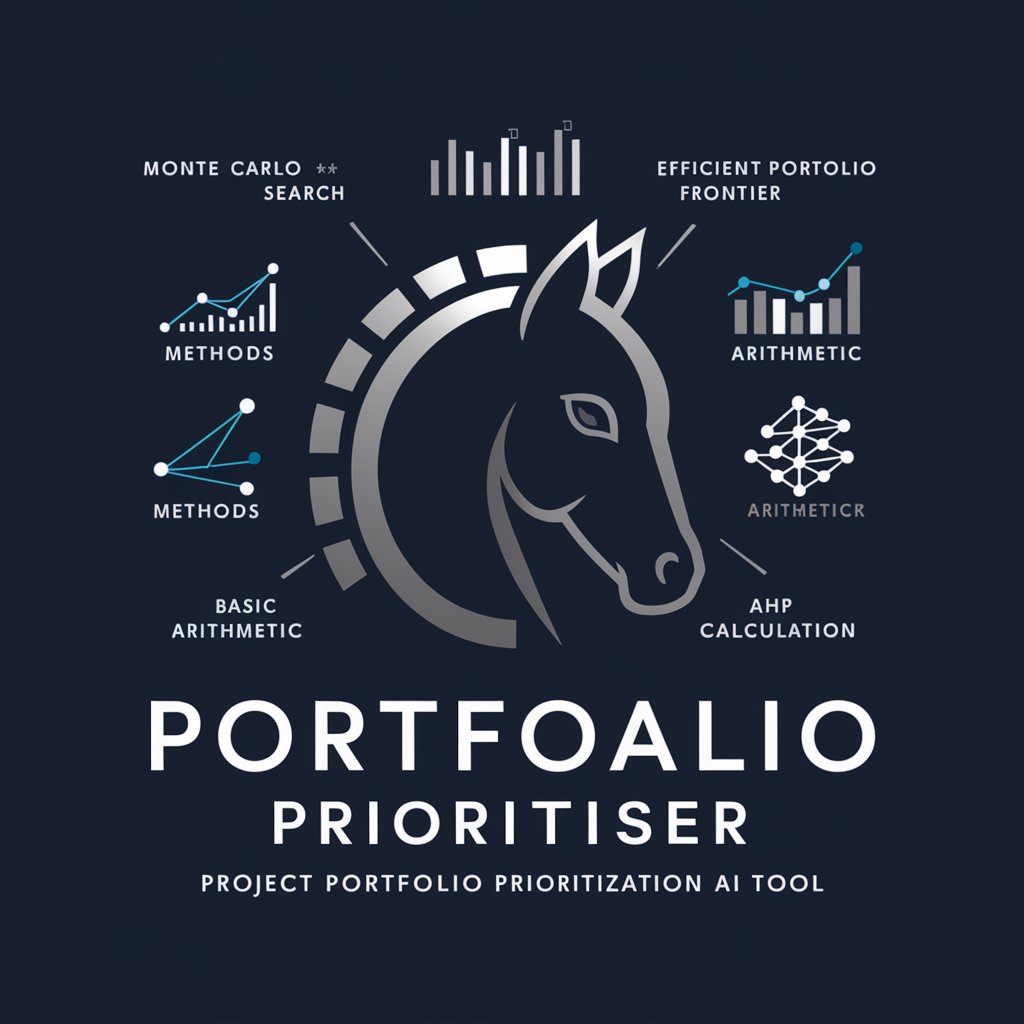
AS Portfolio Optimization v. 1.1 - AI-Powered Portfolio Optimization

Welcome! Let's optimize your investment portfolio with advanced financial strategies.
Optimize your investments with AI-driven insights
Explain the concept of modern portfolio theory in simple terms.
How can I construct a minimum variance portfolio using my historical stock data?
What are the steps to create an efficient frontier for a given set of securities?
Can you provide a detailed analysis of my portfolio's performance based on the uploaded data?
Get Embed Code
Introduction to AS Portfolio Optimization v. 1.1
AS Portfolio Optimization v. 1.1 is designed to assist users in creating and managing portfolios of securities, leveraging the principles of modern portfolio theory. This version emphasizes constrained optimization for minimum variance and tangent portfolios, providing tools to analyze and visualize the risk-return trade-off in investment portfolios. It operates with a default assumption of a zero risk-free rate for the estimation of the tangent portfolio, which can be adjusted based on user input. A key feature includes the ability to calculate and plot the efficient frontier, representing the set of portfolios offering the highest expected return for a given level of risk. This tool is particularly useful for financial analysts and portfolio managers who aim to optimize portfolio allocation to achieve specific investment objectives. For example, it can analyze time series data in Excel or CSV formats, calculate expected returns, variances, and covariances of assets, and simulate numerous portfolio compositions to identify those that lie on the efficient frontier. Powered by ChatGPT-4o。

Main Functions of AS Portfolio Optimization v. 1.1
Efficient Frontier Calculation and Visualization
Example
Given historical price data of several assets, AS Portfolio Optimization v. 1.1 can compute the expected returns, variances, and covariances, and then generate a set of random portfolios to plot the efficient frontier. This visualization helps in identifying the most efficient portfolios that offer the best risk-return trade-off.
Scenario
A portfolio manager looking to rebalance their portfolio would use this feature to evaluate different asset allocations and select an optimal mix that aligns with their risk tolerance and investment objectives.
Minimum Variance and Tangent Portfolio Optimization
Example
By optimizing the weights of different securities in a portfolio, AS Portfolio Optimization v. 1.1 identifies the minimum variance portfolio, which has the lowest possible risk for a given return, and the tangent portfolio, which offers the highest Sharpe ratio assuming a risk-free rate of zero.
Scenario
An investment analyst can use this function to construct a new fund that aims to minimize risk while achieving a desired rate of return, or to find the most efficient portfolio that can be formed on the capital market line.
Custom Risk-Free Rate Adjustment
Example
While the default risk-free rate is set to zero, users have the flexibility to input their own risk-free rate based on current market conditions or their investment policy, allowing for more accurate tangent portfolio calculations.
Scenario
In a low-interest-rate environment, a pension fund manager may adjust the risk-free rate to reflect the yield on government securities, helping to tailor the portfolio to meet the fund's long-term liabilities.
Ideal Users of AS Portfolio Optimization v. 1.1 Services
Financial Analysts and Portfolio Managers
These professionals benefit from detailed analysis and optimization tools to manage investment portfolios, assess risk and return profiles of different asset combinations, and make informed decisions to meet investment goals. AS Portfolio Optimization v. 1.1 aids in this process by offering data-driven insights and simulations.
Academic Researchers
Researchers focusing on finance, economics, or related fields can utilize AS Portfolio Optimization v. 1.1 for empirical studies, testing hypotheses about market behavior, portfolio performance under various constraints, and the practical applicability of modern portfolio theory.
Individual Investors
Savvy individual investors looking to manage their own portfolios can leverage the tool to understand the risk-return trade-off of their asset allocations, experiment with different portfolio compositions, and optimize their investments based on scientific principles and market data.

How to Use AS Portfolio Optimization v. 1.1
Step 1
Begin by visiting yeschat.ai for a complimentary trial, accessible without the need for account creation or a ChatGPT Plus subscription.
Step 2
Upload your Excel or CSV file containing time series data of securities' returns to initiate the portfolio optimization process.
Step 3
Specify your optimization criteria, such as target return or minimum variance, to customize the portfolio according to your investment goals.
Step 4
Utilize the tool to calculate efficient frontier, optimal asset weights, and other critical metrics based on modern portfolio theory.
Step 5
Review the generated portfolio suggestions and leverage the tool's insights for informed decision-making in your investment strategy.
Try other advanced and practical GPTs
Property Listing Architect
Transforming Images into Market-Ready Listings

Neural Network Master GPT
Elevate your work with AI power

Pro Summarizer
Distill Information, Enhance Understanding

TL;DR: Text Summariser
Condensing information, preserving essence.

Workforce Transformation Advisor
Navigate Workforce Evolution with AI-Powered Insights

Socratic Facilitator Training
Master Socratic dialogue with AI.

Trading Assistant
Empower your trading with AI-driven insights

Fr. John Amorti SJ: Catholic Resource
Insightful Spiritual and Theological AI Assistance

Buddha Shakyamuni
AI-powered Dharma Exploration

Prompt Wizard
Crafting precise prompts, powered by AI

Social Post Genius
Elevate Your Social Posts with AI

Python and Data Science Expert
Empowering data science with AI assistance

Frequently Asked Questions about AS Portfolio Optimization v. 1.1
What data format is required for portfolio optimization?
AS Portfolio Optimization v. 1.1 requires data in Excel or CSV format, containing time series of returns for various securities to perform optimization.
Can I specify a risk-free rate for tangent portfolio calculations?
Yes, while the default risk-free rate is zero, users have the option to input a different risk-free rate for more accurate tangent portfolio estimations.
Is it possible to generate more than 100 random portfolios?
Yes, the tool can accommodate more than 100 random portfolios upon request, with a cautionary note on potential computational limitations.
How does the tool handle 'date' variables in the dataset?
The 'date' variable is omitted from summary statistics calculations to focus on financial metrics relevant to portfolio optimization.
Can AS Portfolio Optimization v. 1.1 assist in academic research?
Absolutely, the tool is designed to support academic research in finance by providing robust portfolio optimization based on modern portfolio theory.





